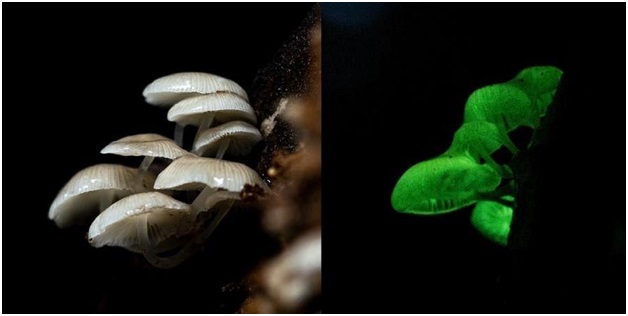Bioluminescent Fungi 'Mycena Chlorophos' (The New Indian Express)

- 10 Nov 2023
Why in the News?
A team of researchers and the forest department have found a rare bioluminescent mushroom in the Kanyakumari Wildlife Sanctuary (KKWLS).
About Mycena chlorophos:
- Mycena chlorophos is a species of bioluminescent fungus, meaning that it can produce its light.
- It is primarily found in subtropical Asia, including India, Japan, Taiwan, Polynesia, Indonesia, and Sri Lanka, as well as in Australia and Brazil.
- The bioluminescence is produced through a chemical reaction that involves luciferin, a light-emitting molecule, and the enzyme luciferase.
- Luciferase catalyzes the oxidation of luciferin, which produces light.
- The luciferin in Mycena chlorophos is a compound called trans-3-hydroxyhispidin.
- This compound is also found in other bioluminescent fungi, such as Neonothopanus nambi and N. gardneri.
- The bioluminescence of Mycena chlorophos is thought to serve several functions.
- It may help the fungus to attract insects, which can help to disperse its spores.
- It may also help the fungus to ward off predators.
What is Bioluminescence?
- It is the ability of living organisms to emit light.
- It occurs due to a biochemical reaction between luciferins, oxygen, and the enzyme luciferase.
- The benefit of bioluminescence in fungi is to attract insects to facilitate their spore dispersal.
